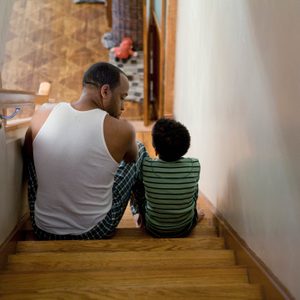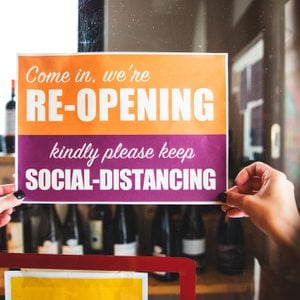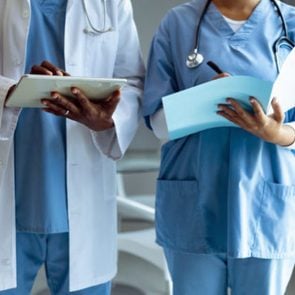How 10 Covid-19 Experts Are Handling Back to School for Their Kids
Updated: Mar. 30, 2022
Concerned about school this fall? Here's how parents—who happen to be Covid-19 experts—are handling the challenges coronavirus poses to their children and themselves.
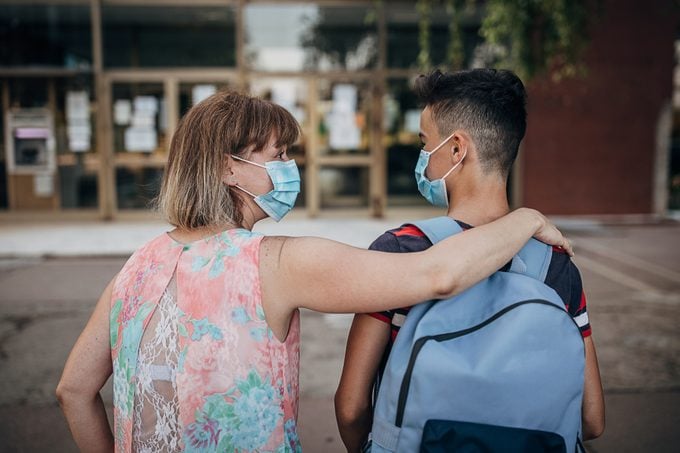
Fall is back-to-school season but, like everything else in 2020 thanks to Covid-19, it looks very different this year. School administrators and parents all over the country are struggling with the decision of whether or not to send their kids back to school and if they do, how to do it safely. To make it even more frustrating, every school district is dealing with a different situation—one that’s changing by the day.
Remote learning during coronavirus
The stakes are high. In addition to the health concerns that come with a global pandemic, there are economic, social, logistical, and educational costs involved. And when it comes to students, online school and in-person education are not the same. Students in the United States reported being 27 percent less engaged during online classes, with English and Language Arts taking the biggest hit in participation, according to a new survey, State of Remote Learning Report 2020, done by Quizlet, a studying tool that helps students and learners with various subjects.
Remote learning has also amplified pre-existing disparities between wealthy and poor students. Pre-Covid-19, students from both the highest income bracket ($100k+) and the lowest income bracket ($0-$50k) studied an equal amount; after schools turned to online-only, far fewer lower-income students were studying on a weekly basis, the Quizlet survey found. This is likely due to reduced Internet access and technology available at home. It may also be more difficult for lower-income families to have a parent at home to help with online school. (Here’s how to help your kids excel in school.)
Is in-person learning safe?
In-person learning has its own issues, namely that schools can be germ factories. Several school districts have already reopened for school and the results aren’t comforting. A school in Indiana had positive cases and had to quarantine students on the very first day, closing entirely by the end of the week. A Georgia school that went viral after students posted pictures of jam-packed hallways confirmed positive cases and that they too were closing their doors. A separate Georgia school district had to quarantine over 800 people in the first week back. Meanwhile, the University of Notre Dame in Southbend, Indiana canceled in-person classes for two weeks after new coronavirus infections emerged just as classes began in early August. (Here are the best face masks for teachers for in-person instruction.)
There is no right answer
The public is as confused as ever, with parents getting an alarming amount of conflicting information. On one hand, the White House is telling parents that children are “essentially immune” to the virus and “don’t transmit” it so it’s safe to reopen schools. At the same time, many teachers and public health experts are advocating for continuing remote schooling, pointing out that children can transmit it and even if they don’t get very sick, the adults who work with them can. Then there’s the mysterious Covid-19 related illness that strikes children. Parents looking for a scientific answer won’t have much luck as unfortunately there isn’t a significant amount of research in this area yet; even scientists can disagree on the best options.
Faced with two less-than-ideal choices, many families are having a lot of anxiety about what to do for school this year. The Centers for Disease Control and Prevention (CDC) has a school decision-making tool to help individual families analyze all the different factors. But information is one thing, actually knowing what the experts do is another. So we talked to Covid-19 experts, including doctors, psychologists, and epidemiologists, about their thoughts on the reopening of schools and what their plans are for their own children. What they have to say might surprise you.
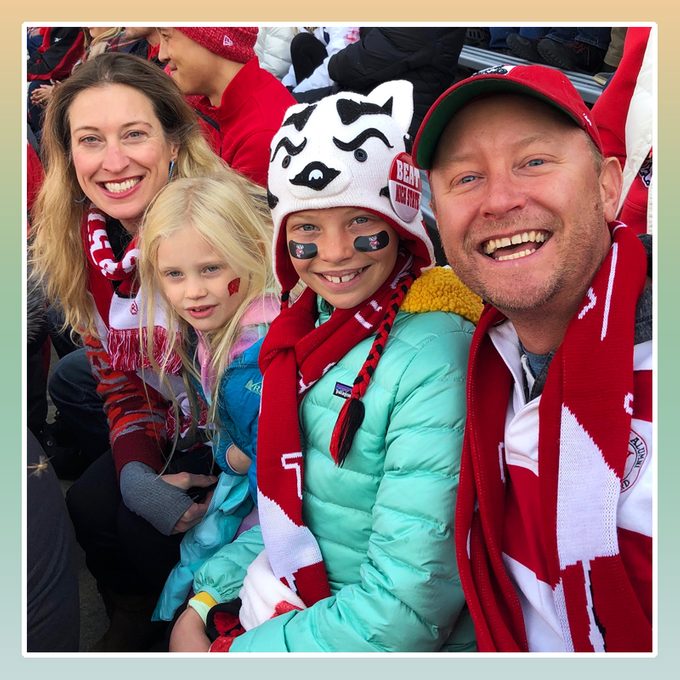
Talk to kids about safety in a fun way
When it comes to the list of normal back-to-school worries, you can just add Covid-19 to the list, after friend groups, school supplies, and first-day outfits, says Doug Newton, MD, a practicing psychiatrist with a master’s degree in infectious disease epidemiology and the national physician lead for Thriving Schools at Kaiser Permanente, chief medical officer of SonderMind. He’s working with Varsity Tutors to provide free mental health sessions for parents and children around the challenges with Covid-19 and online learning. He is a father of two daughters, ages eight and 12, in Denver.
“Sure, my daughters are a little worried, but back-to-school is always a time of change,” he says. And this year will certainly be a change: The 4th-grader will be doing school all online, while the 7th-grader will be going to school in-person but organized into small pods.
He’s prepping them emotionally and physically, starting with a lot of conversations about the virus: What is known, what isn’t, and what they, personally, can do. “In a world that’s out of control, they can control what they do when it comes to fundamentals like social distancing, wearing a face mask, and following the recommended handwashing protocols,” he says. “However, they can’t control others and if they see someone behaving in a way that is counter to the school policy and dangerous, it’s time to talk to an adult.”
Don’t forget to have fun
But Dr. Newton has also made it a point not to forget the fun that comes with back-to-school. “This is a great opportunity to be in the moment with the kids, make them feel secure, and encourage them to prepare to do the right things,” he says. “We took the girls shopping to pick out their own masks and they even got fun sparkly hand sanitizer.”
Parents will also do well to focus on the things they can control and to try not to worry about the things they can’t, he says. “This is a fluid process and we can only plan so much. We’ve tried to create contingencies from A to Z but we are just going to have to be patient, admit this is not something we can control and just wait and see,” he says. “This is our plan now but we will keep an eye on the current CDC data. I feel as long as the numbers are low, that transmission will be less of a risk and that the social and emotional benefits outweigh the physical risks.” (Here’s how to prep for family visits this holiday season.)
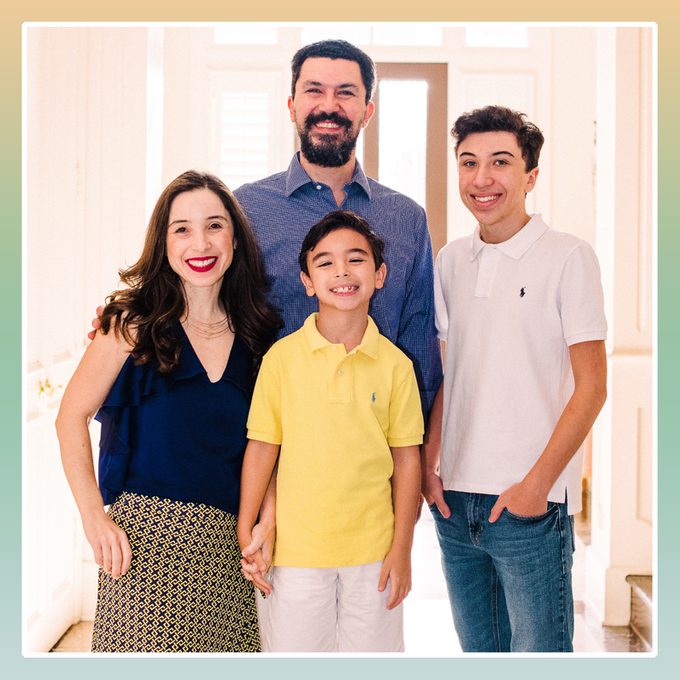
Opt for online learning with supplementary educational resources (if you have that option)
Murilo Melo, MD, PhD, is a clinical pathologist with a specialty in molecular diagnostics. Keli Melo, PhD, is an infectious disease specialist who is currently working on PCR tests for Covid-19. Together they created BeAware, a service offered to schools to protect students and staff through electronic proximity alerts, contact tracing, and quarantine monitoring. They live in Plano, Texas, and are the parents of two boys, aged eight and 14. (Read about a day-in-the-life of a Covid-19 contact tracer.)
Covid-19, the pandemic, and viruses are common dinner table conversations in the Melo household and the boys are well-versed in all the facts and developments. So when it came time to make a decision about going back to school, they started with the data.
“The most important factor in our decision is an epidemiological one, both in terms of new cases in our area and how they are fluctuating, and the more localized the data one has, the better,” says Dr. Melo. “Since the number of new cases varies more depending on test access, we are also monitoring hospitalizations in our area.”
The boys are very comfortable online and did well with remote schooling in the spring, so if there is even a moderate risk they would have no qualms about keeping them home, he adds. However, the decision was taken out of their hands when the school district changed its plan to be 100 percent remote, for at least the first nine weeks of school.
A focus on extracurriculars
They’re not worried about the fall and are busy making plans to supplement the online education at home, with extra activities based around the kids’ hobbies and interests, including financial investing, art, digital production, swimming, music, and, yes, even video games. “Fortnite has become their communication platform with friends, who all play online, and staying connected socially helps immensely,” he says.
In addition to low case numbers, for them to be comfortable allowing their kids to return to school, the Melos say they need clear safety guidelines and consistent, frequent contact from school administrators. They’re hopeful that the boys can return to school soon but they prefer to wait until it’s a safe situation.
In the meantime, they’re practicing social distancing, masking wearing, hand washing—and having conversations about peer pressure. All these precautions can be frustrating for the kids, who see some of their friends with a lot more freedom. “We used this topic as a talking point about how we need to watch what our friends do, and be wise to join them or not in some activities,” Dr. Melo says. “We point out that right now it’s Covid-19, but as you grow, it may be drugs, or other dangerous things.” (Get your kids back into a regular school schedule.)
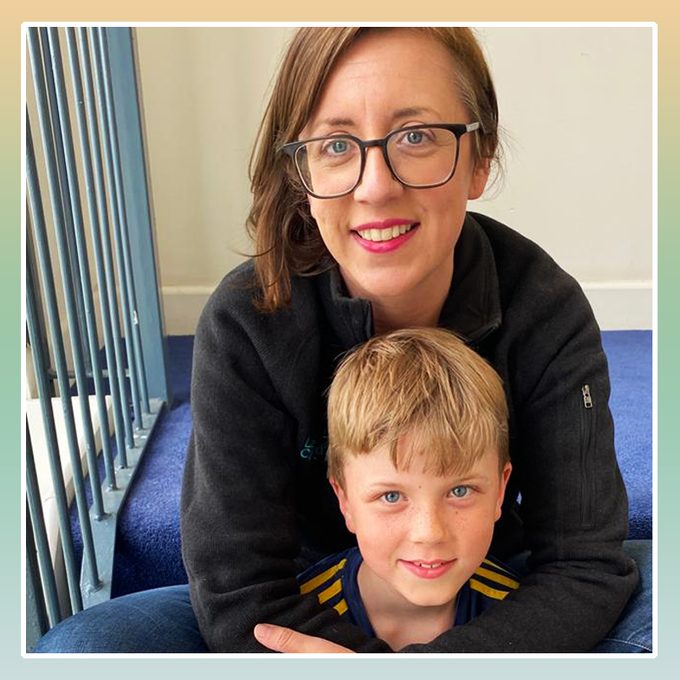
Buy towels for restrooms
“We are currently based in Ireland, where all children will return to school, in-person, in September,” says Gwen Murphy, PhD, a former epidemiologist at the U.S. National Cancer Institute and now the director of Epidemiology at Let’s Get Checked, a medical testing service. She’s a mother of two, aged six and nine. “At least that’s the plan now. With rising rates in many areas of the world and the start of the flu season approaching, I think we all need to prepare for more uncertainty.”
Like most kids, hers fluctuate between excitement and anxiety but because they’re so young, Murphy says they’ve brought up an extra concern. “Kids have spent every waking hour with their parents for months and now are feeling particularly anxious about preparing to leave their parents,” she says.
She’s preparing them by talking about the small, easy things they can do to protect others, like sneezing into their elbows, wearing masks, not sharing school supplies, and getting their temperatures checked on arrival. In addition, the kids will carry their own hand sanitizer and hand towel for the washroom. At school, arrival and pickup will be staggered and classes will be held outside when possible.
One thing she wishes more people would be discussing is the influence of parents’ behavior on their children’s school behavior. Social distancing rules are for everyone, not just school children, and parents need to set a good example, she says. “Parents need to be just as conscious of our own behavior, as well as the kids’,” she says.
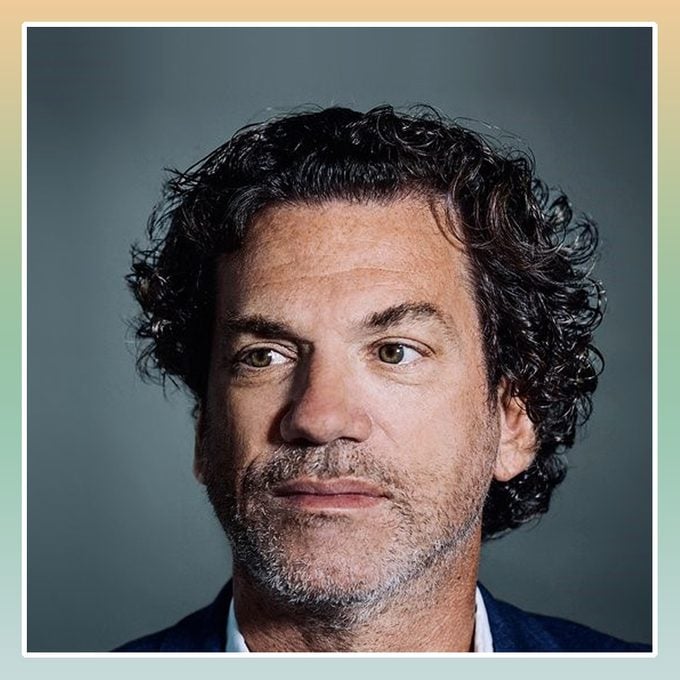
Practice mask-wearing
David Edwards is an aerosol transmission expert, professor emeritus of the Practice of Biomedical Engineering at Harvard, and founder of Sensory Cloud, a company that designs healthcare solutions based on respiratory biology. He is the father of three boys, aged 17, 19, and 21, in Boston. School is going to look very different for the Edwards household this year. “There are no sports, meals are individual, everyone will be in masks, and classes will either be taught in a hybrid model (for our youngest) or mostly all online (for our older two),” Edwards says. “All three are anxious, of course.”
Because his kids are older, this means he’s been able to discuss the plans for school in a very detailed way and the facts help lessen the anxiety. “We have had many discussions so far and I always try to include the science, the health, and the hygiene of safe and meaningful social interactions in a learning environment,” he explains, adding that as a scientist he sees some very positive things coming from this “experiment.” “We are now learning through our children what learning will be like for years to come,” he says.
Buying additional protective gear
To prepare them, he’s equipping them with surgical masks, plenty of hand sanitizer, and the Fend, a protective nasal spray he designed. (It’s in final human trials before being released this fall.) The boys’ schools are also requiring twice-weekly mandatory Covid-19 testing, along with strict social distancing guidelines and building cleanings. (Here’s a list of face masks your kids will actually want to wear.)
These precautions give Dr. Edwards confidence that his kids will be safe. However, if these critical guidelines are not followed, or if there is an outbreak of infection, he says he wouldn’t hesitate to bring his kids home and switch to remote learning.
Buy fun masks
Jason Huntley, is a microbiologist who studies vaccine development and a professor of medical microbiology and immunology at the University of Toledo. He lives in Toledo, Ohio with his wife and six-year-old son. After reading the recommendations of the American Academy of Pediatrics, Huntley and his wife decided to send their son back to school in person this fall.
“Ultimately, we believe that in-person education is essential for our son’s academic, social, and emotional development. He needs to be with his friends and to interact with other people,” he says, adding that the quality of his education is a factor as well. “My wife and I are not experts in elementary education. We moved to our school district specifically because of the dedication and hard work of our teachers in the classroom—online learning cannot replace that.”
That said, they are taking extra measures to ensure he and everyone at the school stays healthy, starting with buying fun masks and getting their first-grader used to wearing them all day. “We have a minimum of two masks per day for him and practice correct mask-wearing (nose must be covered at all times),” he explains. “We are also reinforcing handwashing and personal hygiene habits, limiting contact with other people, and eating a healthy, immune-boosting diet at home.”
Staying up to date with local cases
They are also careful to comply with all the reopening instructions from the school. For instance, there will be no busing or after-school activities, and students will have to follow a new arrival procedure.
“Our son is very young, so we don’t dive into the minutiae of case numbers, deaths, testing, symptoms, or my own research projects on Covid-19. Instead, we are trying to impress upon him that getting sick would not be fun, that we as parents are doing everything we can to keep him safe and healthy, that we as a family are doing everything we can to keep other people safe,” he says. “We assure him that his life, including playdates, activities, sports, and family vacations, will return to normal someday and in the meantime, we all have a responsibility to help stop the spread of the virus.”
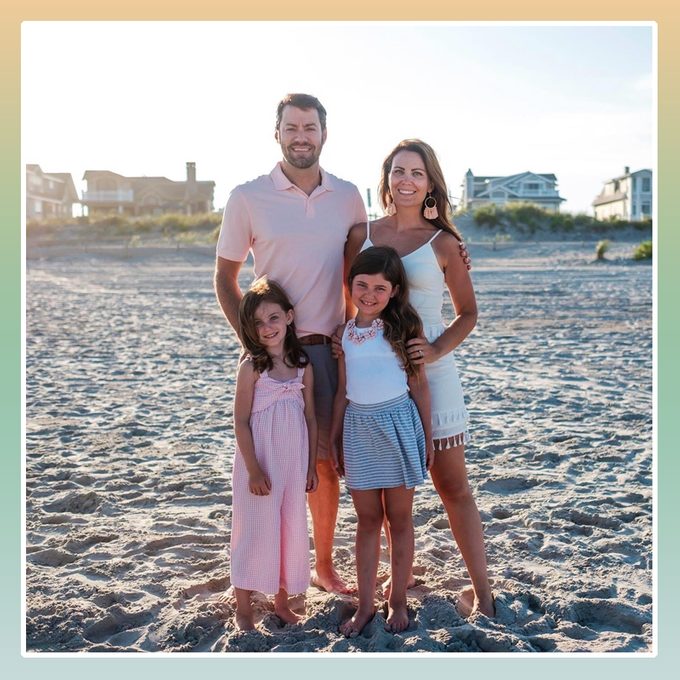
Practice “what if” scenarios together
Meghan Walls is a pediatric psychologist with Nemours Children’s Health System in Wilmington, Delaware and is on Delaware’s task for reopening schools. She is a mom to two daughters, aged eight and six. All children will start the year 100 percent online, per the school district’s rules, but after a six-week period the district may decide to offer in-person or hybrid schooling—and if they do, Walls says she will be sending her kids to school.
“I’m lucky, pediatric [Covid-19] data is shared with me frequently. The information we’ve received from physicians is that transmission rates and transmission spread in children appear low,” she says. “I’ll be interested in understanding the district’s plans for keeping children, teachers, and staff safe, as well as their plans for what happens if there are Covid-19 cases reported but given the current discussions on these topics, I feel comfortable if we do go back.”
As a psychologist, I know there are risks and rewards to in-person school, especially when you look at the specific learning timeframes—periods where key learning happens. Reading is one of those times where there are specific ages where developmentally need to read. As a parent, I have to think about how my child is developing, educationally, and socially. If we don’t go back to school, I’m already planning for how I can make up for that.”
Honesty with kids is key
Meanwhile, she’s preparing her kids to return by addressing all of the “what if” questions. For example, “What if we get germs on us at school?” is answered by telling them that when they get home from school, they will put their clothes in the wash so that any germs on clothes are washed away. “Telling them what to expect, why things are happening, and what might happen prepares my kids and eliminates the fear of not knowing,” she says. The key is honesty. “If you’re not sure, it’s better to say, ‘I don’t know’ than to make something up.”
Focusing on what her kids can do, rather than just what they can’t, is another strategy she uses. For instance, they are allowed to play with kids within a “pod” of families who are also committed to social distancing.
“I would encourage parents to validate their children’s feelings that this is hard. We forget that this moment in kids’ lives can feel really big,” she says. “Reassuring your kids that you’re going to walk through this with them goes a long way.” (Here’s how to spot anxiety in kids.)
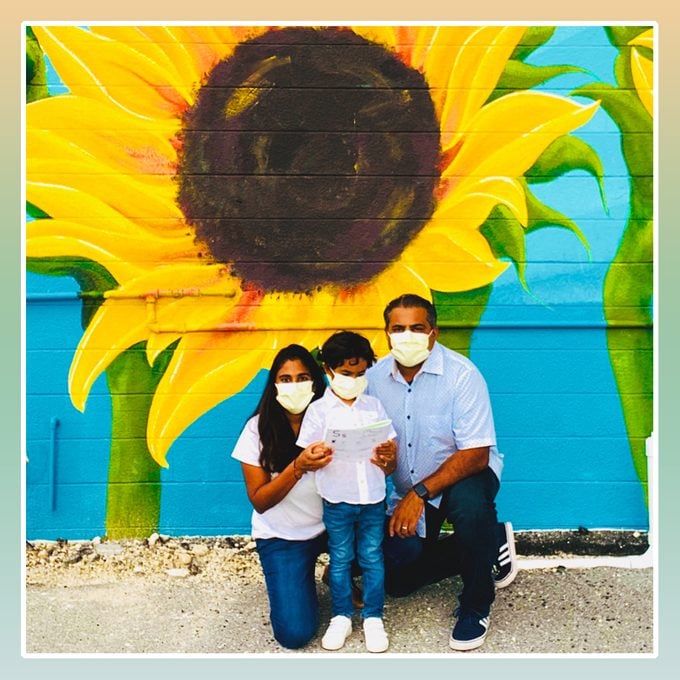
Get involved with the safety board at your child’s school
Ajoy Kumar, MD, is the former board chair of the Florida Academy of Family Physicians and former chief medical officer of Florida 3 Disaster Medical Assistance Team, clinical assistant professor of Family Medicine at Florida State University, and affiliate assistant professor, Department of Family Medicine, at the University of South Florida. He is the father of a four-year-old son.
Deciding with his wife to send their only child in-person to school this fall was not an easy choice for the Kumars. “It’s really difficult because I used to work in a children’s hospital. A colleague told me about a four-year-old kid with Covid-19 on a ventilator,” Dr. Kumar says. “My son is our only child and if anything happened to him, I don’t know what I’d do.”
Ultimately it came down to being able to choose the preschool, one that met his stringent safety standards. “We’re very fortunate to be able to send him to a private school in a small class,” he says, adding that he’s very involved with the school, helping them set their health and hygiene guidelines. Some of those include not allowing children to transport anything between home and school, like a water bottle or a lunch box; no backpacks or bags; no busses; no lunch, just individually packaged snacks served in class by the school; and all physical activities done outdoors.
Talking about hygiene
At home, Dr. Kumar’s had to add some 4-year-old specific rules. “Kids can be really gross! We’ve talked about not picking your nose but also not picking anyone else’s nose. We practice washing our hands for 20 seconds and we’ve already started training with the masks,” he says. “I look at the data every day and the risk is low where we are,” he says. “He’s so excited to go and it’s so important for his socialization. Plus, you can’t really do online school with preschoolers.”
However, if cases begin to spike or he sees an increase in admissions at the hospital, or if a child or staff member tests positive, he says they have no problem taking him out of school.
“Every night we make sure to give him lots of cuddles and kisses and that’s really what he needs most right now anyhow,” he says.
Protect family members
Barbara Saltzman, PhD, is an epidemiologist and professor in the School of Population Health at the University of Toledo in Ohio. She is the mother of three kids, aged 16, 13, and 10, and she also has a husband with type 1 diabetes, a known risk factor for complications from Covid-19. To keep him as safe as possible, they opted to do school 100 percent remote this year.
“From the beginning we spoke openly with the kids about all of the details of dealing with an infectious disease, that their father is more susceptible to complications, and why we were making the decisions we were making,” she says. “While they miss their friends, they have been incredibly understanding about the decisions we have made for the family, and make good use of virtual options to socialize.”
The hybrid plan
The decision to do online school also stems from her concerns about the schools. “At this time case numbers in our county are extremely high. I don’t feel that the ventilation system in our school buildings will be adequate to clear the virus-containing aerosols from the building, and I do not think kids will be able to keep the distance necessary to eliminate the risk of contracting Covid-19,” she says.
Their school district is currently planning on reopening with a hybrid plan that can easily change to a fully online program which adds another wrinkle. “All of our kids do better with a set schedule and the hybrid plan would be too variable for their comfort. A sudden switch to fully distance learning would also be difficult for them to navigate,” she says. “With the fully online option we know what we are getting into this year, and we will be home to support their learning. Our kids also did well with online learning this past spring so it suits their learning style.” (Find out when your kids can see their grandparents again.)
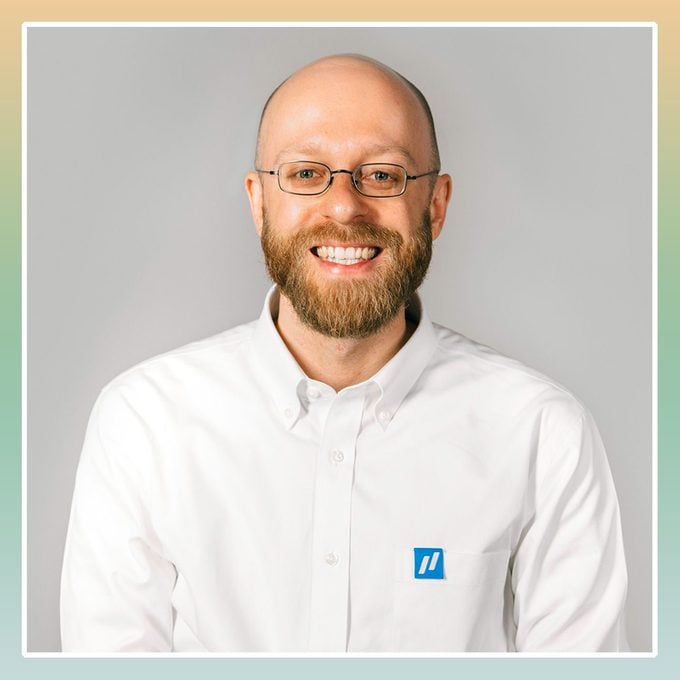
Choose schools carefully (if you have that option)
“There are actually very few circumstances under which I would send our kids to school,” says Nate Favini, MD, the director of Primary Care at CareMore Health, an attending physician at UCLA, and medical lead of Forward, a telehealth company. He lives in San Francisco and is the father of a five-year-old and a newborn. “For instance, if there were more than 10 kids in the class, if we lived in an area where the Covid-19 prevalence was high, if we had health conditions, or if we couldn’t quarantine from those who do have health conditions, we wouldn’t hesitate to keep our daughter home,” he says. But the family was able to find a school that met all those conditions and so they have already sent their daughter back to school 100 percent in-person.
“Given the nature of my job, sending our daughter to our small preschool seemed lower risk than my day-to-day work,” he adds.
Normalizing mask-wearing
The most important thing they have done to prepare her is to normalize mask-wearing, which wasn’t as difficult as some people may think, he says. Despite the hand-wringing in the national debate about small children having issues wearing and keeping masks on, she’s done just fine with it. “Kids are really adaptable and while all of this may still seem strange to us, it has become pretty normal for her,” he says.
The only thing he wishes he could change is the way the school system in general is functioning. “The response of the education system has been completely underwhelming. There’s a terrible lack of imagination. We should be harnessing every outdoor space as classroom space and getting kids educated while the weather allows,” he says. “I wish we were seeing a nationwide mobilization to figure out how to get kids to school, instead we’re seeing resignation—either to calling the school year off or plowing ahead as if everything is normal.”

Focus on the future
“For the upcoming school year, we feel most comfortable with a selective hybrid method,” says Ali Khan, MD, a board-certified surgeon practicing in Georgia and the father of two daughters, aged seven and 14. This means that the youngest will go to school full-time in person while the high-schooler will attend in-person part-time and do online school the rest of the time. “My wife and myself have no underlying medical issues and we have no elderly living with us and our daughters thrive at school so we feel this is the right choice for our family,” he says.
To help prepare the girls, he says he’s focusing on the positives, including a coronavirus vaccine. “We feel it’s important to keep our kids informed about the pandemic but we make sure to focus on how we’re going to get through it and talk about the time in the future when things will be more normal,” he says. “We let them know doctors and scientists are working on a medication for everyone to take to help protect us that could be ready as soon as the end of this year.”
Managing transportation and athletics
The two biggest changes for the girls’ school routine are transportation and athletics. They will be skipping the bus and carpools and be driven to and from school. “We’re also limiting their sports by sticking with ones that can be done alone or are naturally socially-distanced activities, including tennis and running, and avoiding basketball, gymnastics, and soccer where there is more contact between individuals,” he says.
The Khans are encouraging their girls to follow the school guidelines by wearing masks, washing hands, and social distancing but aren’t going beyond that. “If children can focus on the basics that’s enough,” he says.

